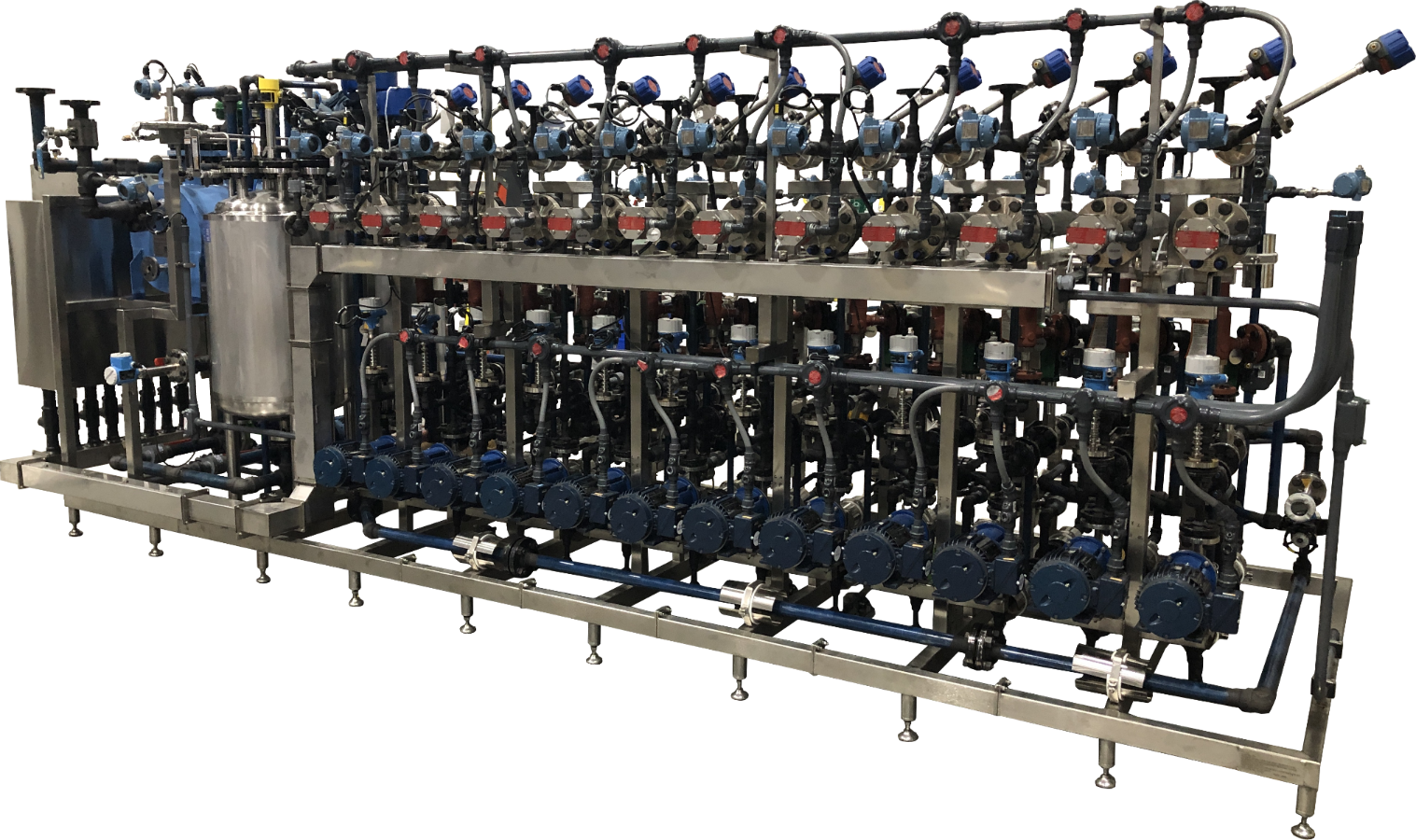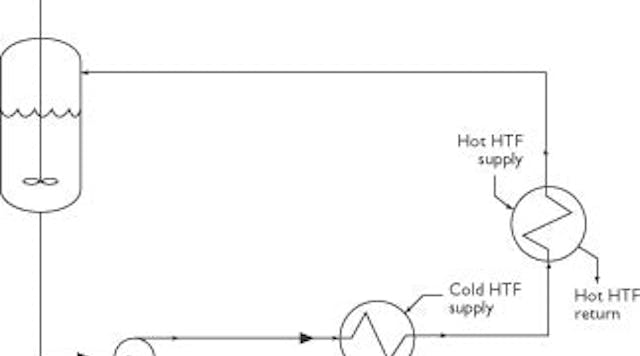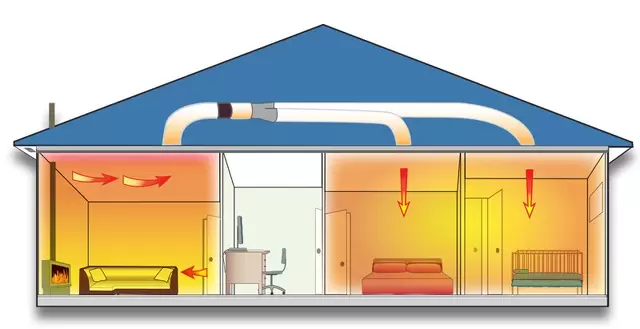Checklist: What to Know Before Implementing DVS Heat Transfer Systems in HVAC Systems
Innovations in Heat Transfer Solutions: What You Required to Know for Optimum Efficiency
Technologies in Heat transfer systems are transforming performance across various industries. Advanced materials like graphene and nanofluids assure substantial renovations in thermal conductivity. The assimilation of IoT and equipment discovering provides possibilities for real-time surveillance and boosted power performance. However, the landscape of thermal monitoring is swiftly advancing (DVS Heat Transfer Systems). Comprehending these advancements is vital for attaining suitable system efficiency and sustainability in the future. What specific improvements are forming this makeover?
Emerging Materials for Improved Heat Transfer

Advanced Heat Exchanger Designs
While standard Heat exchangers have served their purpose in various applications, progressed layouts are currently emerging to fulfill the boosting needs for efficiency and performance. These cutting-edge designs, such as plate, shell-and-tube, and finned-tube Heat exchangers, include boosted surface areas and boosted circulation patterns to raise thermal transfer prices. Additionally, small designs enable for minimized room demands without jeopardizing effectiveness. Advanced products, such as compounds and corrosion-resistant alloys, furthermore enhance resilience and performance under extreme problems. Simulation technologies and computational liquid characteristics are increasingly utilized to refine these designs, ensuring peak Heat transfer qualities. As markets seek to minimize power intake and make best use of result, the adoption of innovative Heat exchanger styles is critical in achieving these purposes.
The Role of Nanotechnology in Heat Transfer
Nanotechnology plays a crucial function in improving thermal conductivity within Heat transfer systems. By controling products at the nanoscale, scientists have achieved considerable improvements in energy effectiveness. These advancements not only optimize efficiency but likewise add to more sustainable power solutions.
Enhanced Thermal Conductivity
Significant improvements in thermal conductivity have emerged with the application of nanotechnology, reinventing Heat transfer systems across various sectors. By incorporating nanoparticles into Heat transfer liquids and products, researchers have actually accomplished amazing boosts in thermal conductivity. These nanoparticles, such as carbon nanotubes, graphene, and metal oxides, enhance the Heat transfer properties due to their high surface and one-of-a-kind thermal characteristics. The resulting composites display improved efficiency in applications ranging from electronic devices cooling down systems to sustainable power technologies. Moreover, the capacity to tailor the size, shape, and composition of nanoparticles permits optimized thermal management services. Therefore, nanotechnology remains to play a crucial duty in the growth of extra effective and reliable Heat transfer systems, leading the method for improved industrial applications.
Energy Effectiveness Improvements

Combination of IoT in Heat Transfer Systems
The assimilation of IoT in Heat transfer systems presents the implementation of clever sensors that boost operational efficiency. These sensing units enable real-time data monitoring, permitting immediate changes and optimizations. This technical advancement has the prospective to significantly boost efficiency and power management in Heat transfer applications.
Smart Sensors Execution
As Heat transfer systems evolve, the assimilation of wise sensing units with the Net of Things (IoT) has actually become a transformative technique. These sensing units allow real-time surveillance of temperature level, stress, and flow rates, improving system efficiency and reliability. By gathering and sending data, they help with proactive maintenance, minimizing the danger of system failures. Furthermore, clever sensing units add to power financial savings by refining operational parameters Learn More based on environmental conditions. Their capacity to analyze patterns and abnormalities enables for informed decision-making, ensuring peak performance of Heat transfer systems. As industries increasingly embrace this innovation, the application of smart sensors stands to change just how Heat transfer systems are taken care of, leading the way for higher sustainability and improved efficiency results.
Real-Time Data Tracking
How can real-time information monitoring enhance the effectiveness of Heat transfer systems? By incorporating Net of Points (IoT) modern technology, Heat transfer systems can take advantage of continual data collection from clever sensors. This real-time monitoring permits prompt analysis of temperature, pressure, and flow prices, making it possible for operators to recognize ineffectiveness without delay. Modifications can be made to maximize efficiency, lower power consumption, and extend devices lifespan. In addition, predictive maintenance can be carried out, decreasing unanticipated downtime and costly repairs. The ability to visualize efficiency metrics through control panels improves decision-making, cultivating a proactive strategy to system monitoring. Inevitably, real-time information keeping an eye on not only enhances operational effectiveness but additionally adds to sustainability objectives within commercial procedures.
Power Performance and Sustainability Trends
Power effectiveness and sustainability fads are improving the landscape of Heat transfer systems, driving technology and compliance across different industries. Organizations are progressively focusing on energy-efficient styles to reduce functional costs and lessen ecological influences. The combination of renewable resource sources is ending up being extra common, allowing Heat transfer systems to run sustainably while meeting regulative requirements. In addition, advancements in materials and innovations advertise reduced power intake and boost general performance. Lifecycle analyses are additionally obtaining traction, allowing companies to evaluate the environmental impact of Heat transfer systems from manufacturing to disposal. This concentrate on sustainability not just supports company obligation but also positions organizations competitively in a market where customers increasingly prefer environment-friendly options. Energy performance and sustainability continue to be crucial factors to consider for future growths in Heat transfer innovation.
Innovations in Thermal Monitoring Solutions
While the demand for reliable Heat transfer proceeds to rise, technologies in thermal management remedies are arising to address both performance and sustainability challenges. Advanced products, such as phase adjustment materials and nanofluids, are being developed to improve Heat transfer effectiveness - DVS Heat Transfer Systems. These products enhance thermal conductivity and allow for far better temperature level guideline in various applications. In addition, technologies like energetic thermal control systems are gaining grip, making it possible for real-time modifications to handle Heat flow properly. These systems add to energy savings and decrease the ecological effect of thermal processes. Moreover, the assimilation of IoT in thermal administration assists in tracking and predictive upkeep, making sure optimized performance and longevity of Heat transfer systems. Overall, these advancements stand for considerable strides towards even more lasting thermal administration techniques
Future Instructions in Heat Transfer Modern Technology
Emerging developments in thermal management solutions signal an encouraging future for Heat transfer innovation. Scientists are progressively focusing on developing materials with exceptional thermal conductivity and improved energy performance. Innovations such as nanofluids, which include suspended nanoparticles, provide significant renovations in Heat transfer efficiency. In addition, the integration of wise materials that adjust to differing temperature conditions is obtaining grip, allowing for more effective and responsive systems. The rise of additive production methods is likewise allowing the design of complex Heat exchanger geometries that maximize liquid circulation. Moreover, the execution of artificial intelligence algorithms is prepared for to change the optimization of Heat transfer systems, facilitating predictive upkeep and efficiency enhancement. Jointly, these innovations are poised to transform the landscape of Heat transfer modern technologies in various sectors.

Often Asked Questions

How Do I Select the Right Heat Transfer System for My Application?
Selecting the ideal Heat transfer system involves examining application needs, including temperature level arrays, fluid residential properties, and effectiveness demands. Analyzing system kinds, upkeep considerations, and cost-effectiveness likewise plays an important function in making an educated choice.
What Are the Upkeep Requirements for Advanced Heat Exchangers?
Maintenance needs for innovative more Heat exchangers generally consist of regular examinations, keeping an eye on for leakages, cleaning of surface areas, and guaranteeing suitable circulation rates. Sticking to maker standards warranties reliable procedure and extends the tools's lifespan.
Just How Do Environmental Aspects Impact Heat Transfer Efficiency?
Environmental elements significantly influence Heat transfer performance. Variants in humidity, temperature level, and air flow impact thermal conductivity and convective Heat transfer, inevitably affecting system go now efficiency and requiring consideration throughout the design and procedure of Heat transfer systems.
What Security Specifications Relate To Heat Transfer Solutions?
Security standards for Heat transfer systems typically include guidelines from organizations such as ASME and ASTM. DVS Heat Transfer Systems. These requirements address materials, style, and operational techniques to ensure integrity, effectiveness, and security against risks in various applications
Exactly How Can I Fix Typical Heat Transfer System Issues?
Fixing common Heat transfer system problems entails looking for leakages, making sure correct fluid circulation, inspecting insulation integrity, and validating temperature differentials. Recognizing these elements can aid keep system performance and stop further difficulties.
Nanotechnology plays an essential function in boosting thermal conductivity within Heat transfer systems. Substantial improvements in thermal conductivity have arised with the application of nanotechnology, revolutionizing Heat transfer systems across different industries. Improvements in thermal conductivity via nanotechnology have actually led the means for exceptional enhancements in energy effectiveness within Heat transfer systems. Power performance and sustainability trends are reshaping the landscape of Heat transfer systems, driving advancement and conformity throughout various industries. The combination of IoT in thermal management promotes tracking and predictive upkeep, guaranteeing maximized efficiency and durability of Heat transfer systems.